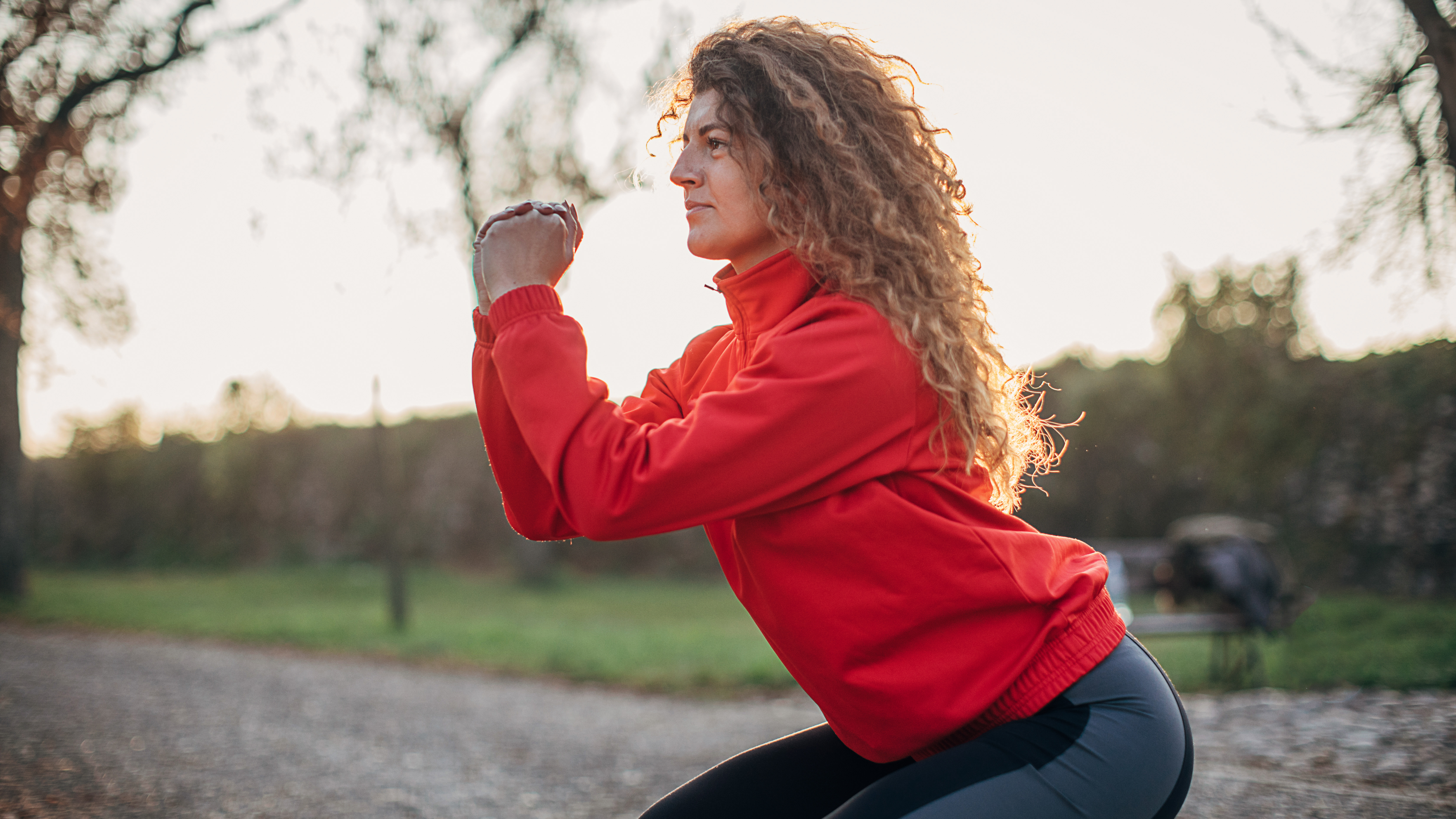
It's normal for your muscles and joints to get tighter and weaker as you age, particularly if you spend a lot of time sitting down. This can lead to various aches and pains, as well as tightness or reduced mobility in the hips, shoulders and back.
Strength training is one of the best ways to prevent this and Pilates instructor Kerrie-Ann Bradley says there's one exercise everyone should be doing as they get older to keep their bodies feeling healthy.
"I think squats are really important as you age. They're a really great full- body workout, particularly for the lower body," Bradley says.
Not only will squats help you increase muscle mass in lower-body muscles like the glutes, quadriceps and calves, but they can also increase your mobility and build strength and stability in the core.
Plus, squatting can improve the way you move in everyday life. "If you can squat well, it can help in case of a fall," Bradley says, adding: "It also means that you don't always end up bending down from your lower back so it's great in terms of spine health too."
You'll see squats come up in a range of workouts, perhaps using dumbbells, barbells or resistance bands to increase the difficulty of the movement.
But they're also a very common movement in Pilates, where the focus is on moving slowly to increase the time your muscles are under tension.
"Squatting is one of the most fundamental movements and I'd be very surprised if you went to a Pilates class and a squat didn't feature somewhere. It's a facet of good movement," Bradley says.
Watch Kerrie-Ann Bradley perform desk-side squats
How to do a Pilates squat
The way you squat in Pilates looks very similar to a conventional squat but there are some key differences, according to Bradley. "Pilates is about finding better foundations and moving from the parts of the body that don't normally work as hard," Bradley says.
"Quite often in day-to-day life, people overuse the top and side parts of their glutes," she continues. "In Pilates you focus on using the muscles underneath your bum, including your hamstrings and the bottom of your glute maximus."
A cue you'll often hear when squatting is to squeeze your bum at the top, but Bradley says this isn't always helpful, as it can cause people to overuse their glutes.
"Instead, when you squat, press down through your heels when you straighten your legs to come out of the squat, which will engage the back of your legs," Bradley recommends.
Take a look at our full guide on how to squat for more guidance on getting the most out of the movement.







